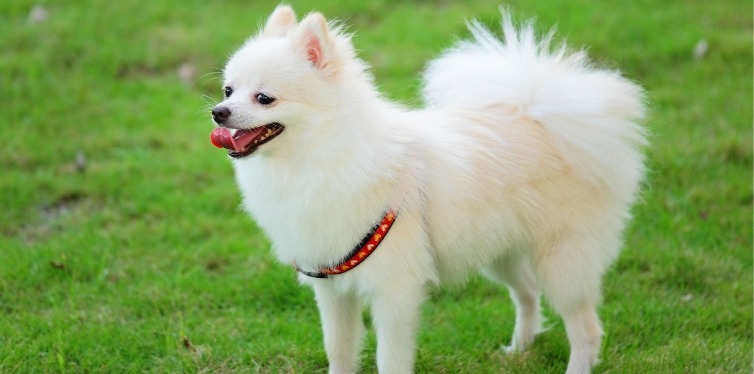
Many pet parents know that dogs need daily walks and training to stay healthy and happy. To keep them safe while out on their walk, leash attachments like harnesses and collars are essential. But which one is the best for your pup?
Dog harnesses are designed to provide more coverage and be easier to train with while providing extra support for dogs with collapsing tracheas, neck problems, or restricted airways. Dog collars, on the other hand, are lighter and less restrictive. They are convenient for quick walks or if your pup is well-trained, but they can cause choking or other health injuries if pulled too tightly.
In this article, I’ll explain the differences between harnesses and collars, including their pros and cons. So, you’ll get a clear idea of which option is best for you and your pup.
Table of Contents
Harnesses vs Collars: An Overview

Selecting the proper harness or collar can make a huge difference in your pup’s comfort and safety when it comes to dog walking. The type of harness or collar that is best for your dog depends on several factors, such as the dog’s breed, size, age, and history of medical issues.
Let’s look at the pros and cons of harnesses and collars in more detail, so you can make an informed decision.
When You Should Prefer Using a Harness

There are a few conditions where using a harness is more advantageous than just using a collar. If your dog is going through any of the following situations you should have to switch to a harness immediately.
Dog With a History of Tracheal Collapse
Can Pomeranians wear harnesses as an alternative to collars? Absolutely! Small dogs like Pomeranians & Yorkies have a higher risk of developing tracheal collapse, in which the trachea flattens, making it difficult to breathe and causing coughing. So, it is best to avoid using collars as they will apply pressure and worsen the condition in such dogs.
Dogs Having a Respiratory or Breathing Issues
Some dogs have respiratory or breathing issues due to various health conditions, such as lung diseases and allergies. Again, using a harness will help avoid injury to your pup’s airways by distributing their weight more evenly across their chest.
For Brachycephalic Breed
Dogs with flatter faces, known as brachycephalic breeds, are typically more prone to respiratory issues that may be better managed with a harness.
Examples of such dogs include French Bulldogs, Bulldogs, and Pomeranians.
For Large Dogs With a History of Orthopedic Disease
Large dog breeds are more prone to orthopedic issues such as hip dysplasia, arthritis, or other types of joint degeneration and may have a tough time getting up to walk. A harness can provide extra support for your pup and help protect them from further injury or discomfort.
For Breeds With a Propensity for Spinal Issues
Long-bodied breeds, like Dachshunds, are more likely to get a slipped disk, which is called intervertebral disc disease or IVDD. Using a harness can help protect the spine from further injury or discomfort by spreading out the pressure of any pulling more evenly across the dog’s body.
Pros of Dog Harness

Dog harnesses are a great option for all kinds of dogs, especially breeds with a more delicate neck structure. Here are some of the main benefits of using a dog harness:
More Control over a Zesty Dog
If you have a big or strong dog, a harness (like a front clip harness) is vital to keeping them under control in environments with lots of exciting stimuli and scents. With a proper harness, you’ll be able to stop your excited pup from chasing after birds, cats, or other dogs on the pavement or in public parks.
Better Safety
The best dog harnesses provide an added level of protection and control, preventing accidents. They cover a larger body area, including the front limbs, shoulders, and chest. This restricts your pup’s movement and gives more safety.
Discourage Pulling Behavior
If your furry friend has developed a habit of pulling on their leash, you may find yourself in a tug of war. Every time they pull the collar, you’re pulled along with them. To help stop this behavior and make walks enjoyable for both of you again, it’s important to discourage pulling behavior.
A no-pull harness is a great solution for this. With a no-pull harness, your dog won’t be able to move forward when they pull on the leash. Instead, the tension will cause them to turn back toward you and slow down. This encourages them to walk at a steady pace beside you, making walks more enjoyable for both of you.
Discourage Jumping Behavior
Dogs jump to show their affection, but jumping is a poor habit that should be discouraged. If your pup jumps up against people, try putting them in a harness—the pressure on the chest area will discourage them from jumping without choking them.
Prevent Neck and Trachea Injuries
Small breeds have particularly fragile necks, so even gentle pulls on dog leashes attached to their collar can cause severe neck pain or injuries.
Harnesses are much safer for these dogs because they attach around the chest instead of the neck, which stops any pressure from being put on delicate tracheas. This makes harnesses ideal for dogs with collapsing trachea, neck problems, or restricted airways.
Great Training Tool
Considering that dogs are ancestrally linked to wolves, it’s not surprising that they love to run free. Since walking with restraint goes against everything they feel instinctively, training can be difficult.
Dog harnesses are a great tool to help you get your pup trained. Because they provide more coverage than a collar, they’re often better at helping guide your pet in the direction you want them to go.
Additionally, you can use retractable leashes to give your buddy a little more freedom while training.
Cons of Dog Harness

Harnesses have many benefits, but there are a few drawbacks that you should also consider.
Hinders Movement
It’s crucial to make sure that harnesses fit correctly—if they don’t, it can cause chafing, restrict movement, and even make breathing more difficult.
Requires More Strength
A harness may be more difficult to train a heavy dog with, especially one that likes to pull, as it requires more strength and exertion to control.
Don’t Have an Identification Tag
Many harnesses don’t come with a place to put your pet’s ID tag. With an identification tag, you can quickly distinguish your dog if it ever happens to wander off. That’s why it’s best to get a harness with a ring for a tag.
Uncomfortable for Dogs at First
Harnesses can be more uncomfortable for your dog because they are bulkier than collars. It might take some time for them to get used to walking with a harness if they don’t like wearing one.
Nightmare for Pups With Longer Fur
For dogs with long fur, a harness can be quite a struggle. The fur can become tangled in the straps of the harness, which then puts unnecessary strain and pressure on your dog – which can cause pain.
Tough To Find the Perfect Fit
The harness size and fit are essential factors to consider when purchasing a new one. Harnesses come in all shapes and sizes, so it might take some time before you find one that fits your dog perfectly. The fit is important because an ill-fitting harness can be uncomfortable for your dog.
When You Should Prefer Using a Collar

In most cases, a collar will be enough to keep your pup safe and secure on their walk. But there are some instances where you may want to use a collars harnesses combination.
Strong-Headed Breeds
If you have a dog breed that is particularly headstrong, such as Huskies, then using both a collar and harness may be beneficial.The collar will help you to direct your pup, while the harness will provide extra supportand prevent them from pulling away from you.
Calm & Obedient Dogs
If your pup is well-trained and calm on their walks,then you won’t need the extra support from a harness and can opt for a collar instead.
When Going for Short Walk
A collar is more convenient for shorter walks or if you’re just stepping outside quickly. If your vet says it’s okay, then longer walks using a collar are perfectly fine.
Pros of Dog Collar

Here are several reasons you might opt to put a collar on your dog.
More Convenient & Hold Id Tags
Collars are easy to put on and take off, making them great for quick outdoor trips. They also come in a variety of styles and, sizes so you can easily find one that fits your pup perfectly.
Collars also have ametal ring where you can put your pet’s ID tag with pertinent information like your address and phone numberso that whoever finds your dog can return him/her to you.
Lightweight and Comfortable
Collars are lightweight and far less bulky than harnesses, so they don’t get in your pup’s way when they are playing or running around. Dogs usually feel more relaxed wearing only a collar. They also do not put any strain on your dog when compared to a harness.
Require Less Physical Strength
Collars require less strength to control than a harness. This is because they do not provide as much coverage, so it’seasier to manipulatethem around your pup’s neck.
Cons of Dog Collar

Although collars have many benefits, there are some downsides to using them, such as:
Easy To Slip Out Of
When it comes to walking, collars don’t offer as much control as harnesses, so dogs can slip out of them more easily. This is especially true for mischievous pupsthat tend to pull a lot on their leash.
Ocular Proptosis
One of the most significant risks associated with collars is ocular proptosis, which is when a collar’s pressure causes your pup’s eyeballs to protrude from their sockets. This can be very dangerous for your pup and cause them extreme discomfort.
Cause Choking or Injuries
If your dog pulls while wearing a collar, it can easily choke or suffer from neck injuries. Because of this, it’s not recommended to put a collar on your pup if they are strong-willed or suffering from glaucoma, any respiratory issues, or spinal malformations.
A Dog’s Leash Can Tangle You Up
Be wary of dog collars that are easy to pull – when coupled with an excited pup, they can quickly turn a leisurely walk into a tangled mess. The dog leash may end up wrapped around your legs or fingers, and you could trip and fall as a result.
Damage to the Thyroid Gland
The thyroid gland is located at the base of your dog’s neck. Collars can potentially cause damage to your pup’s thyroid gland if they are too tight, leading to more frequent trips to the vet.
Not Effective Training Tool
Collars aren’t the best training tool because they don’t provide a lot of control. If your pup is pulling on the leash, using a collar to correct them can be difficult without putting too much strain on their neck. Even using choke collars for training your pup is an inhumane and painful method.
Final Thoughts
When it comes to harnesses and collars, the choice is yours. Ultimately, you need to consider your pup’s size, age, strength, and behavior before making a decision. Collars are perfect for smaller dogs with obedient personalities who only go out on short walks.
However, if your pup pulls a lot or is prone to running off, a harness is a much safer option. No matter what you choose, make sure that your pup’s collar or harness fits them well and isn’t too tight to cause any discomfort. Don’t forget to attach the appropriate identification tag on their collar for safety!
